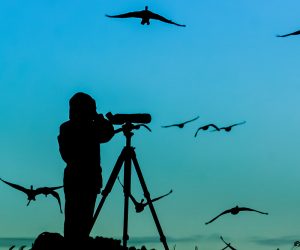 Despite the disheartening weather I see as I look out my window today (slush everywhere, drab grey clouds and blowing snow), I have received some secret information that spring is nigh. I thus sit, resting happily assured that the day’s weather is but a last ditch attempt by winter to lord its dominance over its more congenial successor. My source for the coveted information is varied: the lakes, the sky, and the new sounds venturing forth from all around. My friends, this information is being brought by none other than our feathered friends – the birds. They are on their way back to their northern retreats, and I must say that the sights and sounds of recent weeks are like nectar to the parched desert soul.
Despite the disheartening weather I see as I look out my window today (slush everywhere, drab grey clouds and blowing snow), I have received some secret information that spring is nigh. I thus sit, resting happily assured that the day’s weather is but a last ditch attempt by winter to lord its dominance over its more congenial successor. My source for the coveted information is varied: the lakes, the sky, and the new sounds venturing forth from all around. My friends, this information is being brought by none other than our feathered friends – the birds. They are on their way back to their northern retreats, and I must say that the sights and sounds of recent weeks are like nectar to the parched desert soul.
The colours, the calls, and the diversity of returning birds are truly heartwarming. There is something so reassuring about this repetition of an annual pattern that, perhaps, we instinctively know it to be a harbinger of good things to come. For without spring’s return of our birds, things would seem very worrisome indeed. Those calls of the season’s new arrivals, so cheerful, so insistent, go down like an anti-anxiety pill for the environmentally conscious. But setting our minds at ease in such a way has been no easy feat for these world travellers. The trip from point A to point B (often many thousands of kilometers long) requires great strength, stamina, and a good supply of the necessities of life en route. Places to rest, goodies to eat, safety from predators – these are all keys to the successful arrival of birds back on our home turf.
When you think of all of the challenges facing these extraordinary creatures on their travels, it seems incredible that spring migration is such a predictable and regular event. It reminds me of the surprise many parents feel if their children have made it through the tumultuous years of childhood and adolescence without having suffered any broken bones. With so many potentials for harm, how on earth do so many make it through unscathed?
For birds, the inherent challenges of their cross-continent journeys are compounded, more than ever, by the many changes to the landscape that have occurred, and continue to occur, with alarming rapidity. Collisions with reflective high-rise buildings that dot their migration route; domestic cats out for a game of search and destroy; toxins lacing the very food on which the birds must rely for their travelling fuel. In all, migration these days is a tough haul. Add this to the fact that migratory birds, the ultimate creatures of habit, often head towards historical spots of plenty that are simply no longer there. It ain’t easy being a gypsy in a changing world.
Some of the work that needs to be done to ensure the continuation of migration’s many joys is major. The huge number of jurisdictions through which birds must travel, each with its own environmental policies and priorities, makes conserving our birds’ well-being quite a daunting task. But take heart – many steps can be taken by humble folk, such as ourselves, to help make birds’ lives a little easier. Some ideas? Go native plant crazy. If you aren’t lucky enough to live in an area already blessed with natural vegetation, cover your yard in as many native trees, shrubs, vines, grasses, and wildflowers as possible. Replacing lost habitat, little by little, and ensuring that avian visitors to your little patch of heaven will have the best places to rest, hide, and forage is a great way to give back to the bird world.
Look into what window coverings you can afford, if you find that birds collide with your windows. Avoid all outdoor lighting that points to the sky. Migrating birds become confused by these lights. Opt instead for down-lighting. It’s more intimate anyway, so you’ll be doing something good for the birds, while at the same time encouraging a few more romantic evenings on the patio. Avoid pesticides in the garden – your health and the birds will thank you. On a grander scale, encourage town and city planners in your area to take the plight of migratory birds seriously when building new skyscrapers or considering alterations to old ones. Many options are available to avoid bird strikes – one of the most significant causes of avian deaths today.
Keep your cats indoors. It may seem unfair to your lovely feline companion at first, but birds are killed by the hundreds of millions each year just to end up as playthings for well-fed kitties. And think of all the dangers (e.g., cars, predators, poisons, etc.) your cat will avoid by remaining safely inside.
Be sure to lend your support to organizations working to help save avian habitat. Without a place to live, breed and once again set out from, migratory birds won’t have a chance to reap the rewards of all of our other efforts. Bird Studies Canada (http://www.bsc-eoc.org) is a great place to start, and local and provincial naturalists’ groups are often very active in advocating for habitat protection.
There’s no beating about the bush. It’s a hard time to be a bird, but there is a lot to be positive about too. With so much good work being done to ensure that generations to come will witness migration in all its glory, and with growing awareness of the challenges that birds deal with, there is reason to be optimistic. So let your hope for the future take flight and begin by giving spring’s most wondrous new arrivals a helping hand.

